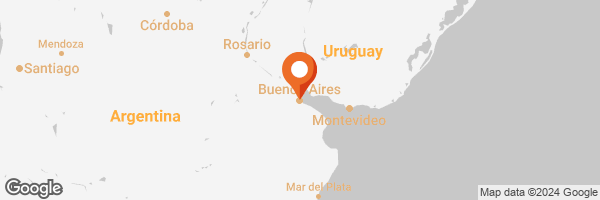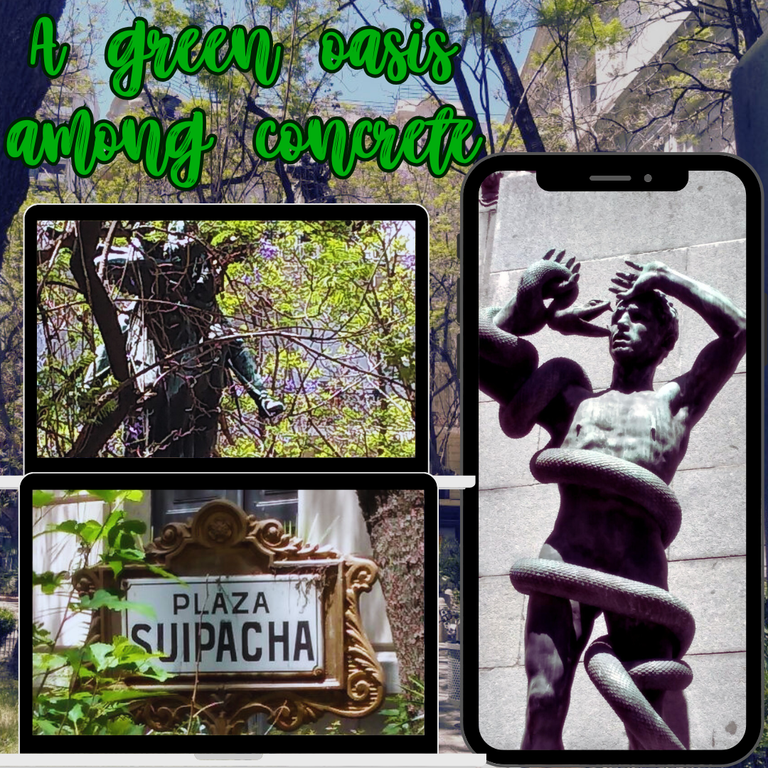
I had arrived early for a meeting with some friends in the heart of downtown Buenos Aires. So, to make the most of my time, I began to wander through the side streets of the meeting site, and just a block away, I stumbled upon this beautiful treasure.
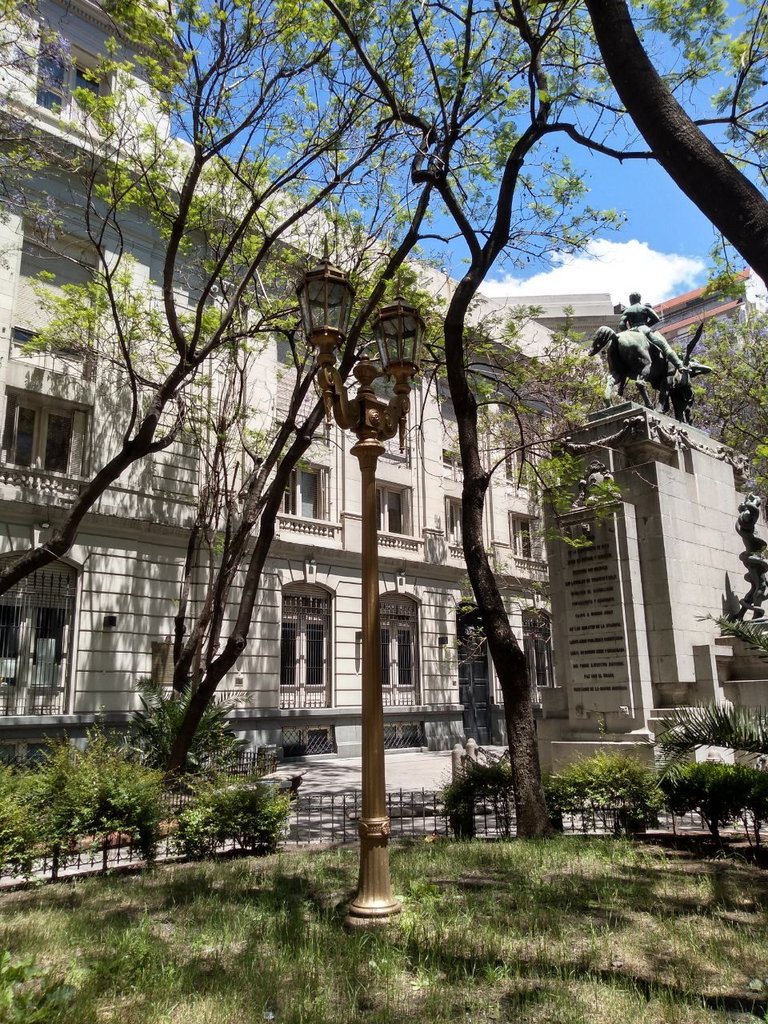
It is not as large as other plazas I have seen, and unlike most, it does not have a playground, it is just a small space filled with greenery, with the main statue occupying the central point on a large pedestal, as if to oversee all the activity around it, and why not, spy on those who live in the higher floors of the adjacent buildings. Luckily, the equestrian statue does not come to life like the monuments in the movie "Night at the Museum."
Unfortunately, it was closed that day, which struck me as oddly curious, although it did not stop me from taking photos through the bars of the sculptures surrounding the main figure, as well as trying to read the information printed on one of the faces of the pedestal.
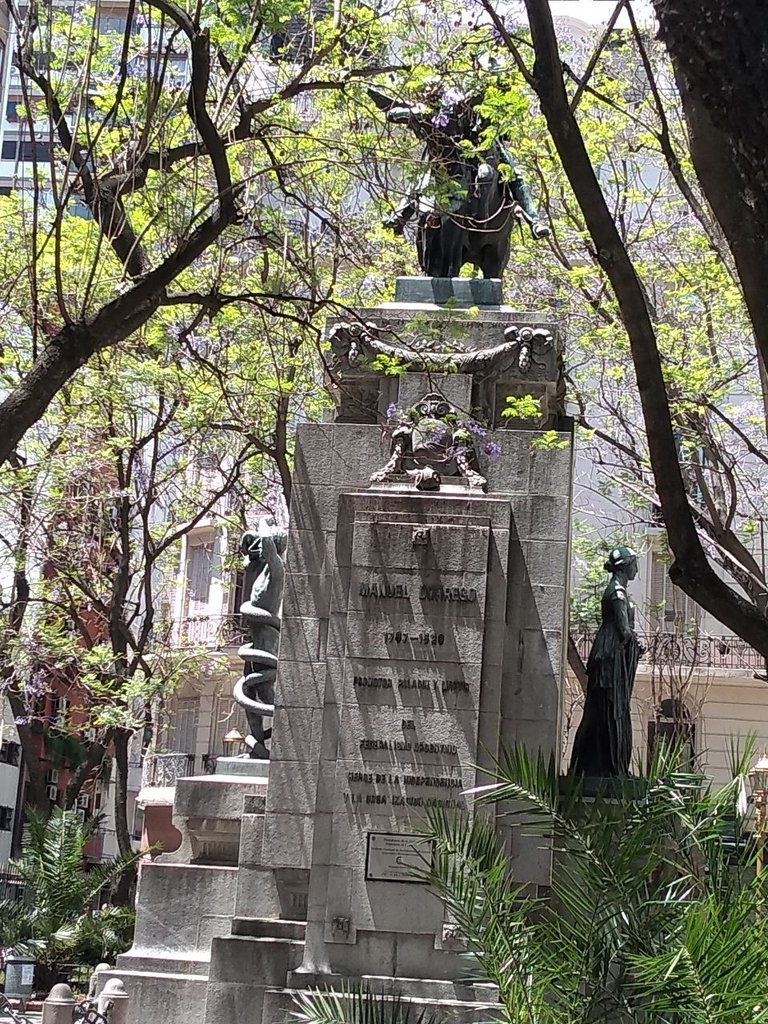
As a curious fact, a security officer who appeared out of nowhere startled me by asking if I needed anything up close, noticing my insistence on photographing the space. Thanks to that surprising encounter, I found out that this square belongs to the municipal government, so it is public, but not fully, and since that day was a holiday for the administrative offices, it would remain closed.
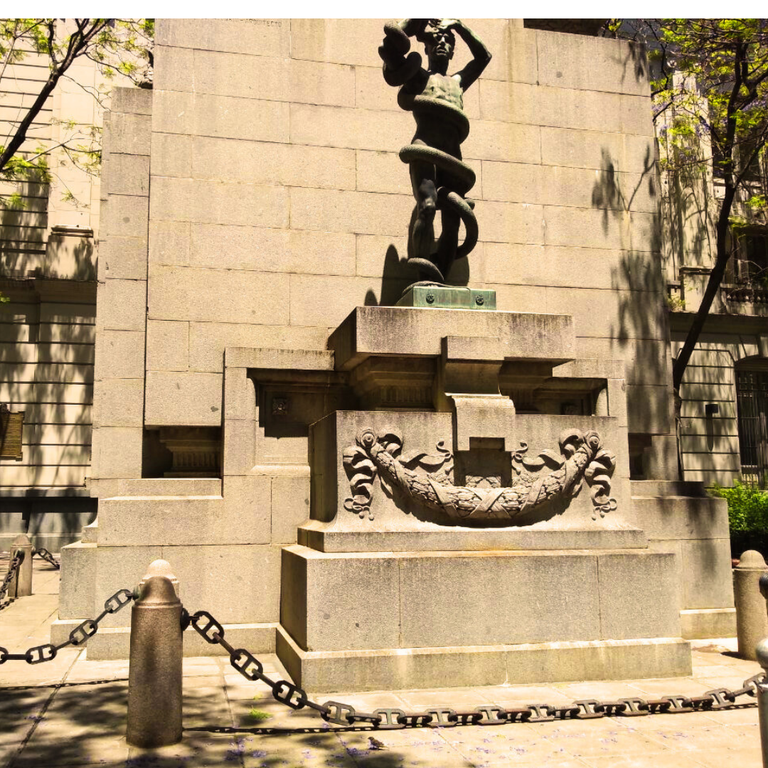
He offered to let me in, at the risk of his job, and although I could have taken advantage of such an offer, I preferred to stay outside, as the idea was not to harm anyone, although I believe I did manage to get some very nice shots to share, with the sun providing excellent lighting for the spaces.
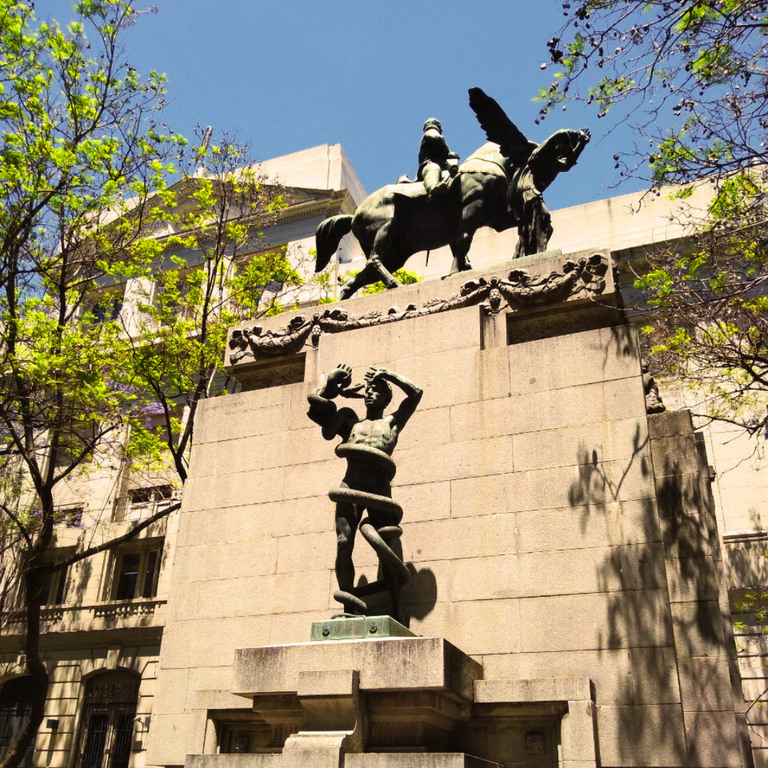
Although it has a sign that says Plaza Suipacha, it is known as the Plazoleta Bruno Barloqui, although among what I managed to see insitu, I did not see that name inscribed anywhere.
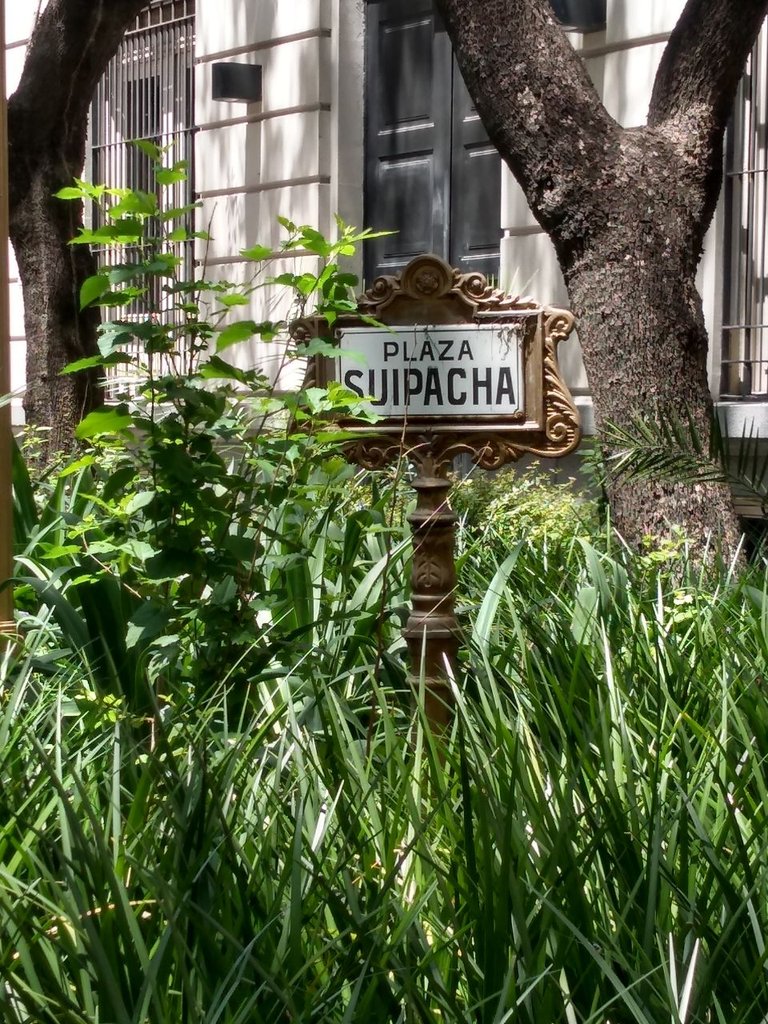
Surrounding the sculptures were large trees that kept the area cool, as well as hosting many birds that came in search of food.
On one side of the pedestal is engraved the name of the person responsible for its construction and ornamentation: Rogelio Yrrutia, sculptor and architect.

In addition to the equestrian statue of Manuel Dorrego, who was a hero of independence and a leader of federalism in Argentina, there are also two more figures. One represents a naked man entwined in a snake poised to bite his face, while he defends himself with one hand, while the other holds it away from his face.
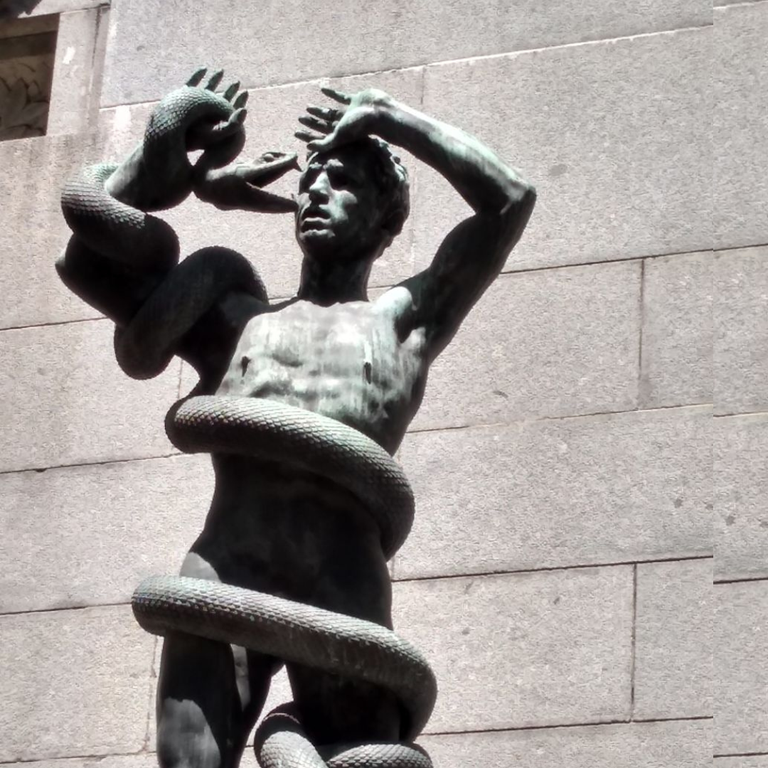
The other, located just behind this, depicts a woman dressed in colonial attire, who, due to the absence of a dress with elaborate details, could represent a servant of the wealthiest classes of that time.

This entire pedestal is surrounded by a large chain linked by what appear to be replicas of cannonballs, made of concrete as a symbolic way to protect this artistic legacy on display to all who pass by the square.
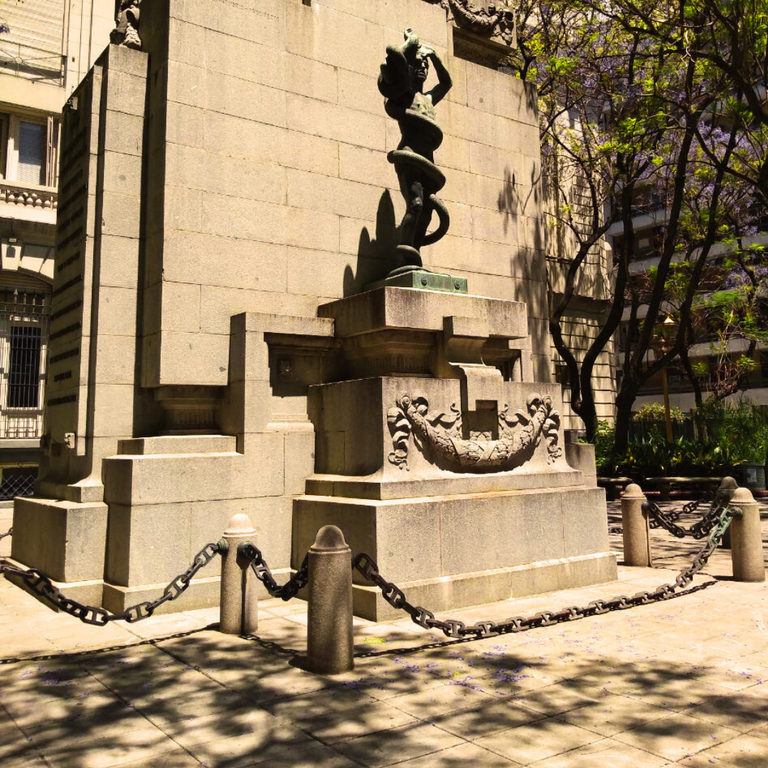
Cement benches placed in the corners, under the shade of the trees, invite you to sit for a while and enjoy this oasis amid the traffic, as the area is quite busy, although while there, it seems as though the sounds are muted and you can breathe without stress.
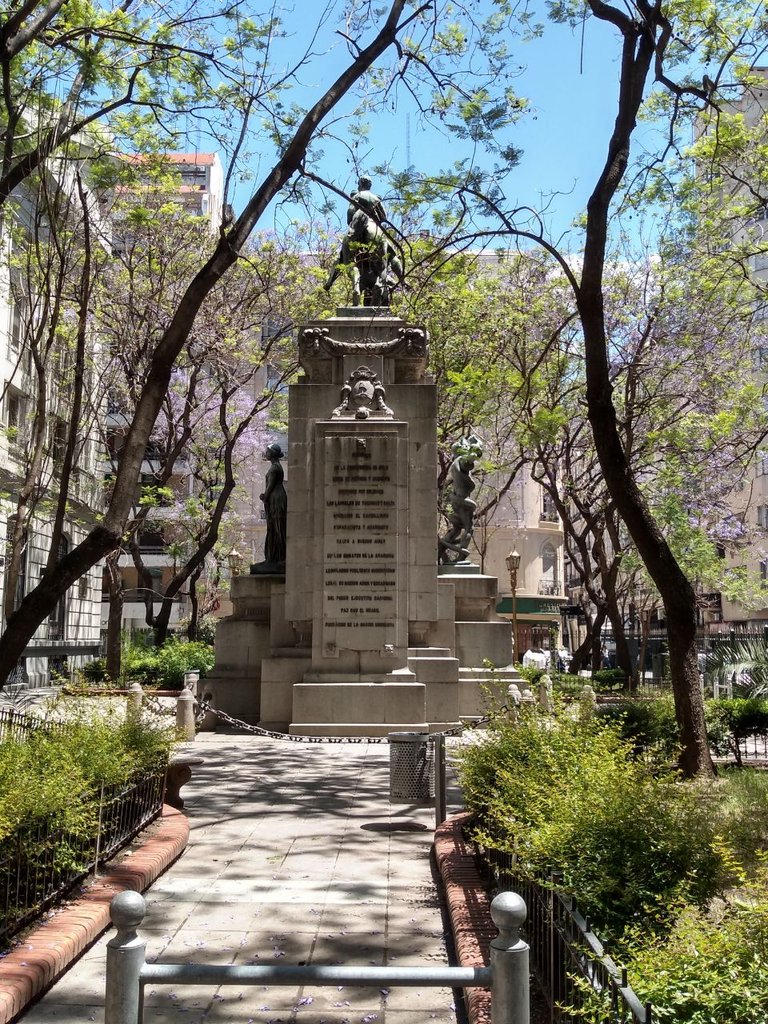
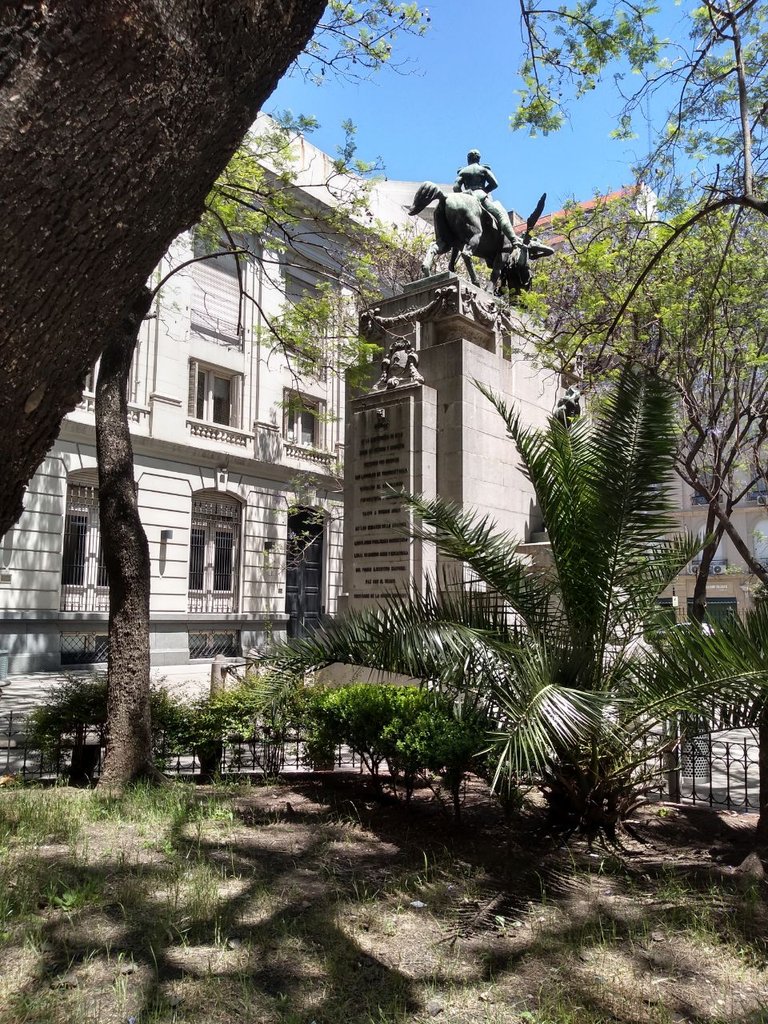
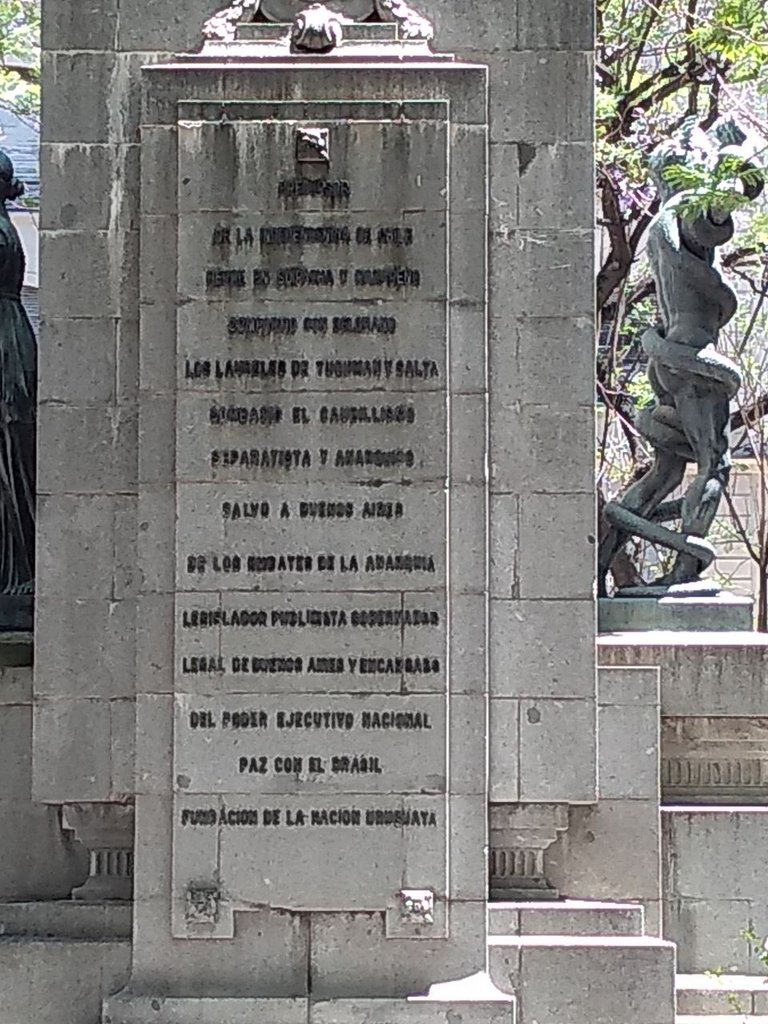
My meeting time approached, and I had to return to the meeting point, but with the hope of finding it open when I come back to that area.

Había llegado temprano para una cita con algunos hivers en pleno microcentro de la ciudad de Buenos Aires. Así que para aprovechar el tiempo, comencé a recorrer las calles transversales del sitio de encuentro, y justo a una cuadra de ahí, me encontré este hermoso tesoro.

Es una plaza no tan grande como otras que he visto, y a diferencia de la mayoría, no tiene un parque infantil, es solo un pequeño espacio lleno de verde, y en el que la estatua principal ocupa el punto medio, sobre un gran pedestal, como para ver desde ahí todo el movimiento a su alrededor, y por qué no, expiar a quienes viven en los pisos más altos de los departamentos contiguos. Por suerte, la estatua ecuestre no cobra vida como los monumentos de la película "Una noche en el museo"
Desafortunadamente estaba cerrada ese día, cosa que me pareció curiosamente extraña, aunque ello no impediría que fotografiara a través de los barrotes las esculturas que acompañaban a la figura principal, además de tratar de leer la información que estaba impresa en una de las caras del pedestal.

Como dato curioso, un oficial de seguridad que salió de "la nada" me asustó al preguntarme de cerca, si necesitaba algo, al ver mi insistencia en fotografiar el espacio. Gracias a ese sorpresivo encuentro fue que me enteré que esta plaza pertenece a la oficia del municipio, por lo que es pública, pero no al 100%, y como ese día era feriado en las oficinas administrativas, permanecería cerrada.

Se ofreció a dejarme entrar, a riesgo de su empleo, y aunque pude haber abusado de semejante ofrecimiento, preferí quedarme afuera, pues la idea no era perjudicar a nadie, igual creo que conseguí unas tomas muy lindas para compartir, además que el sol ayudó bastante con una excelente iluminación de los espacios.

Aunque tiene un letrero que dice Plaza Suipacha, se conoce como la plazoleta Bruno Barloqui, aunque entre lo que logré ver insitu, no vi ese nombre inscrito en ningún lado.

En los alrededores de las esculturas habían grandes árboles que mantenían fresca la zona, además de albergar a muchas aves que entraban a conseguir algo de comida.
En una de las caras del pedestal, se encuentra grabado el nombre del quien fuera el responsable de su construcción y ornamento: Rogelio Yrrutia, estatuario y arquitecto.

Además de la estatua ecuestre de Manuel Dorrego, quien fuera héroe de la independencia y dirigente del federalismo en Argentina, también se encuentran dos figuras más. Una representa a un hombre desnudo envuelto en una serpiente dispuesta a morderle la cara, mientras él se defiende con una mano, mientras la otra la sostiene como para alejarla de su rostro.

La otra, ubicada justo en la parte de atrás de esta, representa una mujer, vestida de la época colonial, quien por la ausencia de un vestido con grandes detalles, pudiera representar a una servidumbre de las clases más adineradas de entonces.

Todo este pedestal tiene alrededor una gran cadena enlazada por lo que parecieran ser replicas de balas de cañón, hechas en concreto como una manera simbólica de proteger este legado artístico expuesto a todo el que pase frente a la plaza.

Unos bancos de cemento dispuestos en las esquinas, bajo el cobijo de la sombra de los árboles, invitan a sentarse un rato y disfrutar de este oasis en medio del tráfico, ya que la zona es bastante concurrida., aunque estando ahí, pareciera que los sonidos se anulan y se logra respirar sin stress.



Se me hizo el tiempo de mi reunión y tuve que devolverme al punto de encuentro, pero con la ilusión de encontrarla abierta para cuando vuelva a ir por esa zona.
Foto/Photo by: @mamaemigrante
Edición/Edited by @mamaemigrante using canva
Tattooworld animated banner
Translated and formatted with Hive Translator by @noakmilo.

Posted Using InLeo Alpha

